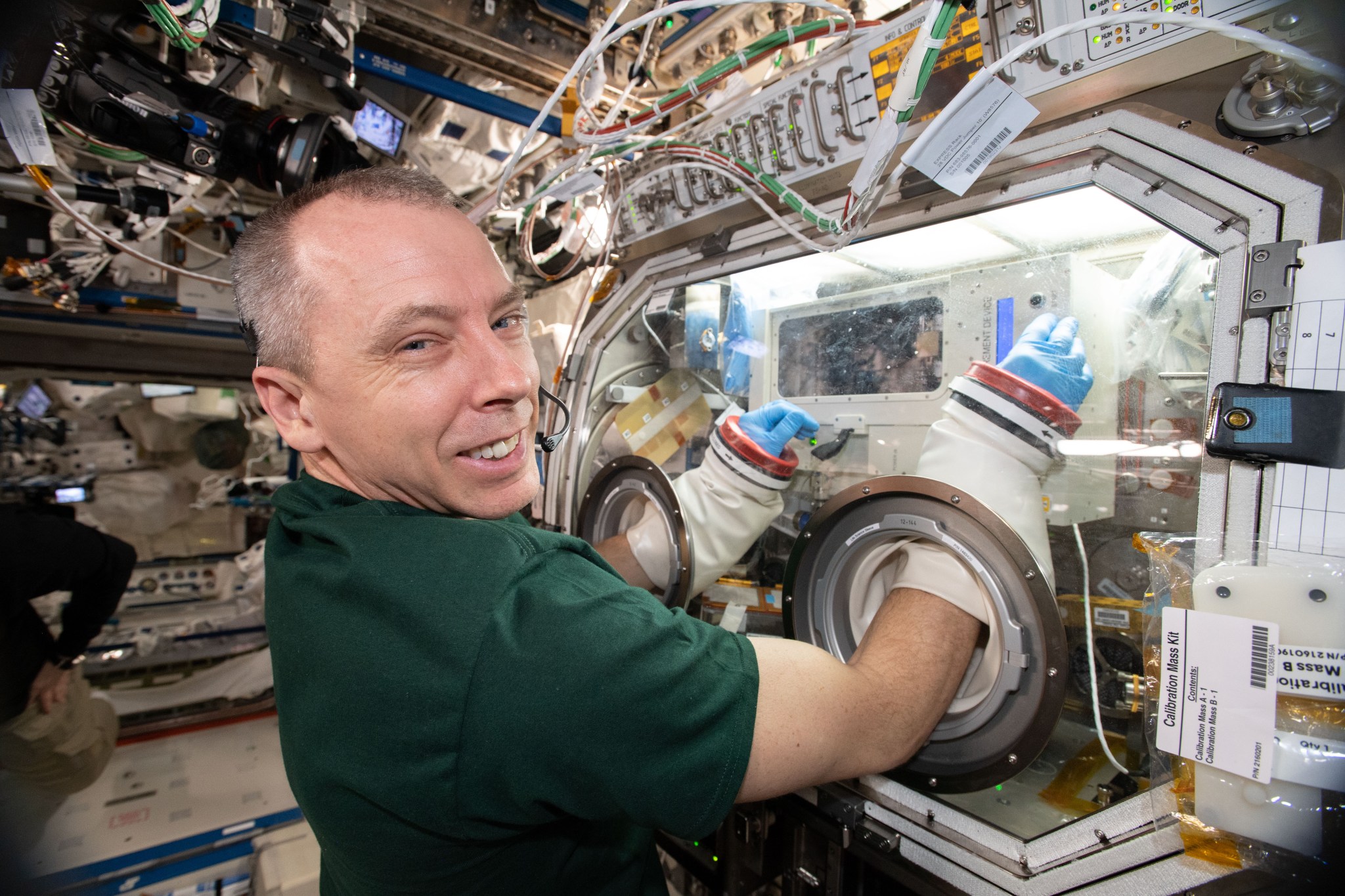A unique collection is tucked away in a biospecimen storage facility at NASA’s Ames Research Center in California’s Silicon Valley. It’s the world’s largest repository of non-human space biology samples from previous NASA-supported research studies. The archive houses specimens predominantly from rodent studies, but it also includes quail tissues and samples of microbes.
Tissue samples, and even mouse droppings recovered from habitats flown on the International Space Station, have been instrumental in helping researchers gain insights into the effects of spaceflight on living systems.
As the space station celebrates 20 years of continuous human presence in low-Earth orbit on Nov. 2, the NASA Institutional Scientific Collection at Ames, managed by the center’s Life Sciences Data Archive, holds onto a legacy of experiments that have made this 250-mile-high orbiting laboratory invaluable to science. The future of space biology research – advancing our understanding of the effects of space radiation, microgravity, and more on biological systems – is also contained in this treasure chest which consists of many test tubes and vials within the archive that are available for additional scientific study.
“The collection is a gold mine of samples which contain clues to life sciences discoveries which can further enable spaceflight,” said Ryan Scott, project scientist for the Ames Life Sciences Data Archive. “It’s the largest of its kind, and only a handful of such repositories exist anywhere on Earth.”


Back to the Future
NASA provides an opportunity to generate new scientific knowledge from previously flown spaceflight experiments by sharing these biospecimens with the scientific community through an open-science approach.
Dating back to 1979, the collection stores about 32,000 animal and microbial biospecimens. Although mostly obtained from space station and space shuttle flight investigations, the collection also includes samples brought back to Earth from Russian Cosmos flights. In addition, it houses samples from spaceflight analog studies that approximated certain conditions of spaceflight in ground-based laboratories.
How Extreme is Spaceflight?
For 20 years, humans have continuously lived and worked in space aboard the space station. This achievement has its roots in more than a half-century of NASA’s experience with human space exploration and space biology research that studies how life responds to the extreme conditions of living in space.
All terrestrial organisms – from tiny plankton to towering redwoods, and whether they swim, soar, walk, wriggle, or exist permanently attached to rocks – have adapted to Earth’s constant force of gravity. They adjust to a regular cadence of daily and seasonal cycles of light and darkness. They live surrounded by Earth’s atmosphere and magnetosphere, dual protective shields that block most of the forms of high-energy space radiation from reaching the surface.
Spaceflight produces significant changes in physics and biology which affect living systems, namely responding to alterations in gravity and radiation exposure. NASA seeks to learn as much as possible about these changes and more, to better understand the risks of spaceflight to astronauts. The results from this research are applied toward mitigating the effects of spaceflight during future long-duration human missions to the Moon as part of the agency’s Artemis program and further on to Mars.
The orbiting laboratory’s unique research capabilities have helped reveal basic biological changes that occur in living things in space. NASA’s research includes long-duration studies of organisms, such as rodents, that have body systems similar to humans and can model human responses to spaceflight.
“The International Space Station’s research platform has been absolutely essential in providing scientists with the biospecimens necessary to discover how mammalian life is affected in low-Earth-orbit,” said Ryan.
Recent examples of discoveries made using the archived biospecimens include recognizing changes in the gut microbiome that suggest a shift in microbial and host metabolism during spaceflight; a cellular mechanism by which microgravity induces pelvic bone loss; and the effects of spaceflight on the eye and corresponding molecular responses.
The collection of biospecimens at Ames has been analyzed by researchers using a wide range of techniques, including microscopy, histology – an examination of the structure of tissues – and a number of molecular analyses collectively known as “omics.” Omics analyses examine different types of biomolecules, such as DNA, RNA, and proteins.
NASA’s GeneLab, the first comprehensive space-related omics database, has processed biospecimens from the NASA Institutional Scientific Collection at Ames. GeneLab’s omics data are available to researchers through their open-science data system for bioinformatics and systems biology analyses.
“There is still a great deal of science yet to be done in addressing the molecular, physiological, and overall health effects of spaceflight, in addition to developing effective countermeasures,” said Sylvain Costes, project manager of GeneLab at Ames. “The untapped opportunity to get involved in space biological research, either through requesting specimens from the collection, or analyzing omics data though GeneLab, is open to the worldwide community.”
For news media:
Members of the news media interested in covering this topic should reach out to the NASA Ames newsroom.
For researchers:
NASA technical webpage: The NASA Institutional Scientific Collection at Ames
NASA technical webpage: Ames Life Sciences Data Archive
NASA technical webpage: About GeneLab
Author: Gianine Figliozzi, NASA’s Ames Research Center
Top image: Preserved non-human space biology samples are archived in the NASA Institutional Scientific Collection at Ames Research Center in California’s Silicon Valley. Credit: NASA/Dominic Hart

























